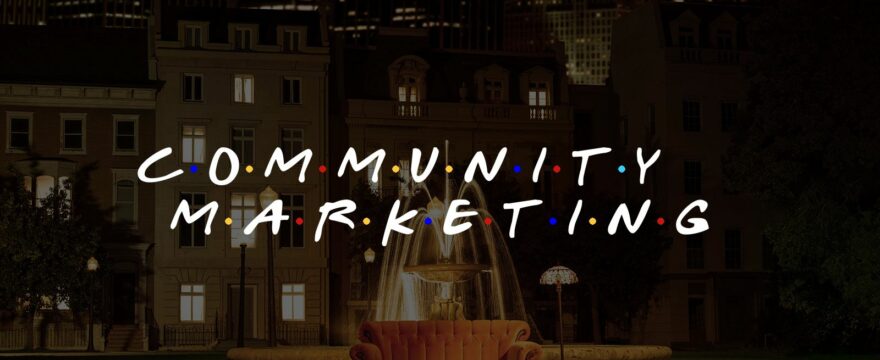After a pleasant conversation, we exchanged business cards. This was the before times—not just pre-pandemic, but prior to my working in either community or marketing. I was a journalist masquerading as a developer at an event catered to code slingers.
The positive association I had with this person and the company they represented would change a few days later when the emails started. They were not personal emails, but they were not impersonal, either. The email address on my business card had been entered into some pseudo-personalized, automated marketing sequence.
Experiences like this can create a rift between community and marketing teams. The highly traceable nature of marketing, when applied to community’s relationship building, often falls flat. At the same time, marketing might rightly say it is hard to connect hugs and happiness to growth metrics.
Thus, the impasse. But it does not have to be this way, as we can learn from a notoriously tough audience—developers. So cue up “I’ll Be There for You,” because community and marketing teams can definitely be friends.
Developer Marketing Is on a Break with Promotion
Anything that smells like marketing could send a developer running. That includes even the smallest mentions of a product, which can be awkward for marketers not used to technical audiences. As a result, you should aim to be “on a break” with promotion when marketing to a technical audience.
Good developer marketing engages the problems developers already have, and educates them. The education over promotion approach to developer marketing gets especially difficult during product announcements. During my time as editor of “ProgrammableWeb,” I became allergic to the phrase “proud to announce.”
And yet, I still see it used to introduce self-serving blog posts that make developers cringe. Even Google, who has a solid developer advocacy reputation, does it on occasion.
The problem is that these posts are focused on the company or product, rather than the developers who would use the product. It was my job to find the actual story within these navel-gazing releases. Developer marketers should be finding and telling that story themselves. Your product announcements—and all your other content—will become much more impactful when you start with the developer point of view, rather than the product point of view.
This focus on solving developer problems applies across your blog posts, tutorials, guides, and all other content you create. In fact, there is an entire book about it—Developer Marketing Does Not Exist. Get the tone right, and you will be rewarded with a Phoebe-and-Rachel-level friendship with developers, which will also draw the attention of your community team.
Community Growth Also Engages and Educates
Depending upon company structure, a community team may be part of a marketing team or it may live in a completely different area of the organization. Regardless, the two likely have different team members and independent meetings. It is important to note, despite the boundaries of the organizational chart, that they are hardly on opposing sides. Outside of the obvious—the two teams are part of the same company—the goals of good developer marketing and community building are complementary.
Marketers know the importance of communicating benefits over features. When it is hard to feel those benefits, it is also tough to convey them to others. That is why developer audiences especially highlight how easy it is to accidentally hit the wrong note with marketing.
Community teams are listeners and equal participants in events and online conversations. Any content they produce must resonate with the problems your audience experiences. In my work with developer-focused companies, I have noticed that community teams are less likely to trigger negative responses from developers. Without the need to promote a product, they can fully focus on being helpful.
High-fives alone will not move someone down the funnel. That is where marketers can complement the community skills. That trust from your audience, whether technical or not, should be treated with care. That is where a good collaboration between teams can help you, even if you informally gather around a conference table, Zoom room, or the couches at Central Perk.
Foster Inter-Team Friendships
Even if you are not literally on the same team within your company, community and marketing teams are both driven by the same company-wide goals. Plus, as you have seen here, they have a lot more in common that is initially obvious. But in the event that the other team is not on the same wavelength, here are a few best practices to kickstart a lasting relationship.
In an “Honest, Hungry, Humble, Happy” interview with previous SendGrid CEO Jim Franklin, he advised to remember that your colleagues are “…smart, they’re hardworking and they have good intentions.” When it comes to any rift between marketing and community teams, it is likely someone is lacking a belief about at least one of those three areas. Without direct proof otherwise, assume everyone is doing the best they can. It will be hard to collaborate otherwise.
It can also be helpful to put the effort in to better empathize with each other’s goals, both explicit and implicit. For example, to understand marketing’s lead metrics helps put their activity into perspective. Likewise, the effort required to create and maintain relationships with key community members might not be immediately obvious.
To gain this cross-team empathy, consider these practical ways to foster collaboration:
- Host a lunch and learn
- Create an informal collaboration committee
- Rotate representatives at each team’s meetings
Any of these concepts—and many other similar methods—will shine a light on each others’ work.
You might not find community and marketing teams splashing around in the fountain like the “Friends” credits sequence, but each team can learn from knowledge the other has gained. Through collaboration, you can better serve your audience and maybe even measure the results. With luck, it will be your day, your week, your month, and your year.
This post was originally published in the second issue of Gravity, a magazine about community engagement from Orbit.
